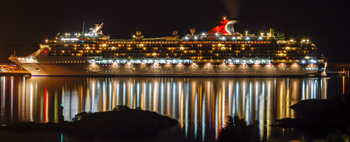May
11
By Rita Button
 |
| Photo by Bob Tuomi |
Victoria’s inner harbour is most commonly described as the jewel of Vancouver Island. Maybe it’s a pearl growing and changing as the years sail by.
Lately, we’ve heard a lot of talk about traffic in the harbour. Today, Ted, my husband, and I checked it out at a time when traffic was almost non-existent, noon on a Tuesday. Entering at the access point adjacent to the Steamship Grill and Bar, we turn left and look through the fenced off area toward the Black Ball ferry terminal. This reliable boat has been a part of the Inner Harbour for a very long time, so reliable, it’s become a part of the expected picture, more noticeable should it be absent at 10:30 and 5:30 daily.
 |
| Photo by S Peter Reid |
Moving along, we see two Canada geese take flight, quietly and gracefully disappearing into the sky. Over there, just beneath where the geese seemed to enter the sky, two Harbour ferries pass each other, moving in opposite directions. The smallest mechanized craft on the harbour, they seem almost like toys, and are as much fun. Passengers can board at the Empress stop and stay on board till the last stop at Tillicum, thereby gaining an unusual view of the city.
The Lower Causeway is almost deserted. Boats in their slips, flowers in the massive stone planters, and two blue plaques on the stone wall opposite the water on the Empress Hotel side, draw our attention. One plaque commemorates seventy years of the Royal Canadian Navy’s using the waters and shows appreciation for the service given by these mariners. I learned that in both world wars as well as the Korean War, ships had left from the inner harbour to serve.
The other plaque denotes the completion of the lower causeway in 1977, an initiative of the City of Victoria, and acknowledges the help from the province in funding the project.
We also come across the pictorial record of First Nations history, the Songhees and the Esquimalt Nations who, until 1911, lived around the inner harbour, and fished in its waters. From Alaska to Victoria, they created an active trading chain which included potlatches. The photographs from the museum’s archives dramatize some of the events. It’s a quiet, beautiful reminder of the harbour’s changing face.
Near the illustrated history is a Lekwungen sculpture which looks almost like a spinning top but with two layers; the First Nations’ words x w seq ‘ em whu-SEI-kum are translated into English: in the mud.
In this area, as well, is one of the whale watching companies, their zodiacs tied to the dock near the First Nations historical documentation.
Milestones restaurant on the corner beneath the Visitors’ Information Office is usually filled with life, but today the patio is closed. Next to Milestones is the whale watching office, then public restroom facilities and finally a gift shop.
If you go up the small ramp, you’re on Ship’s Point, a place filled with open markets in the summer. Today, everything is quiet. A few people venture down the steep ramp to the Flying Otter Restaurant, and a couple sit on a bench in the sun, but, otherwise, we are alone. Harbour Air planes are moored at the dock, three in a row, but none in the sky, at least not discernible to the naked eye.
Two wooden S.A.L.T. (sail and life training) sailing vessels, beautifully unique, are moored. As we near the ships, we notice a group of young people listening to a slightly older teacher.
Of course, the pleasure craft are moored in their slips. But they seem content to stay there on this sunny afternoon, almost as if they know that there’s no place more wonderful than this sunny harbour at this particular time.
On our return trip, we notice that the Clipper has returned, and we wonder, as we always do, about the nature of the two buildings near the terminal. One is right on the water; the other is boarded up, an imitation Elizabethan design with skylights.
Today, at noon, the harbour is quiet, truly a jewel where people might commune with nature and themselves as they wander around the water. We wonder how it might look and sound later in the afternoon on a summer’s day.
